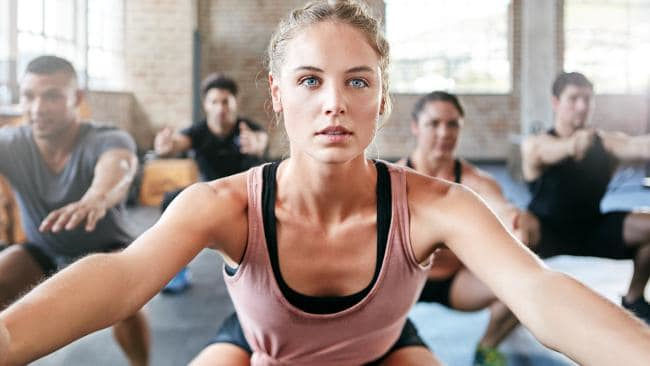I recently joined my local woman’s gym. I thought I’d find working out in a pastel coloured, girls-only space an excellent way to unwind. What I hadn’t counted on was the booming ’80s music, not only in the classes (the music in these was so loud that I couldn’t hear a word the instructor was forced to screech at us) but in the general workout area.
Why, I wondered, must the music be at a volume that means I can’t listen to a podcast on my own device over it? This struck me as particularly odd given almost all the other members were listening to their own devices too. Who was being catered for with this cacophony?
When I approached the manager, she brusquely dismissed my concerns, “It’s a gym, not a library. Buy better noise cancelling headphones to wear.”
The fact she had to raise her voice to offer me this response was telling. Despite researchers expressing concern about music at gyms since Olivia Newton John first donned her leg warmers and got physical, a study by Australia’s National Acoustic Laboratories found that the sound levels in fitness classes are now noisier than they were a decade ago. And while 85 per cent of fitness instructors say they believe loud music is motivating, about one fifth of their clients actually find it stressful. Call me crazy, but I like to hear the instructor when I’m doing a gym class.
It’s probably not surprising then that many fitness professionals have had their hearing impaired by the hours they spend in these loud environments — which means they are all the more likely to continue turning up the sound. However, it’s not just gyms that seem to believe that unless the sound is pumping, people won’t want to join the party.
Restaurants are often so noisy that diners don’t sit and talk over a leisurely meal, but rather they are forced to shout across the table at each other instead Gordon Ramsey style. Concrete walls and floors, high ceilings, and open-concept dining may all be visually appealing, but they pose acoustic challenges. And while dining with a din may be fine if you are with a group and out celebrating, it’s not so pleasant for those expecting a more intimate evening.
David Brady, Chair of the Deafness Forum of Australia, says that although the safe upper limits for workplace noise are set at 85 decibels, most gyms, restaurants and shops would have noise levels well above this limit. “If we are exposed to even slightly higher noise levels for any longer than about ten minutes, we risk damaging our hearing. And when you’re hearing is gone, it’s gone — there is no cure.”
David Brady is particularly concerned about the impact the amped up soundtrack to our modern lives is having on young people who may also be learning in noisy shared classrooms, and attempting to switch off at night by switching on their own music at unsafe levels. He warns, “We are now frequently seeing teens who have the hearing of a 40 year old.”
The World Health Organisation believes that noise pollution is second only to air pollution in terms of its negative impact on our health. Sustained exposure to loud noise has been linked not only with hearing loss, but with a range of health effects including high stress levels, increased risk of ischaemic heart disease as well as sleep disturbances.
Thankfully, many of us are finally starting to vote with our feet, for our ears. More subdued fitness classes like pilates and yoga are rapidly growing in popularity. Late last year Coles supermarket rolled out a “Quiet Hour” aimed at supporting those on the autism spectrum which was embraced more broadly by others also wanting to shop in relative peace (“Do any of us like the cheesy music, constant voice over messages and clanging trolleys?” asked one shopper on social media). In the US, diners wanting a quieter eating out experience have been taking decibel readings at restaurants and sharing these on apps like SoundPrint. Silent retreats, such as Vipassana meditation courses, are being inundated with the aurally exhausted. It seems that not all pleas for the volume to be turned down are falling on deaf ears.
Dannielle Miller writing for The Daily Telegraph



